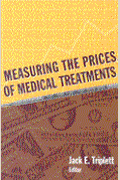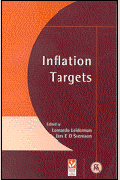What’s the latest thinking in fiscal and monetary policy? The Hutchins Roundup keeps you informed of the latest research, charts, and speeches. Want to receive the Hutchins Roundup as an email? Sign up here to get it in your inbox every Thursday.
Drug abuse may account for up to fifth of decline in prime-age labor force participation
Labor force participation (LFP) among prime-age workers, those between 25 and 54, has partly recovered from the sharp 3 percentage point drop early in the pandemic, but remains about 1percentage point below the pre-pandemic level. Using the increases in substance-related deaths during the pandemic to estimate changes in drug use and the relationship between drug use and LFP from the 2019 National Survey on Drug Use and Health, Jeremy Greenwood of the University of Pennsylvania, Nezih Guner of the Universitat Autonoma de Barcelona, and Karen Kopecky of the Federal Reserve Bank of Atlanta estimate that between 7% and 19% of the decline in the prime-age LFP rate is due to increased substance abuse, specifically opioids and methamphetamine. Given that rates of opioid and methamphetamine abuse are substantially higher for people without a college education than for those with college degrees, the authors speculate that drug abuse may be a factor in the relatively larger decrease in the LFP rate for workers without a college education.
20th-century inflation data suggest that today’s high inflation is likely to persist
The spiking prices of 2021 followed two decades of low and stable inflation, in contrast to the more persistent and volatile inflationary trends prior to 2000. Michael Kiley of the Federal Reserve Board argues that the past 20 years of inflation data provide very little information about how inflation will behave following 2021. Because inflation was stable between 2000 and 2019, there are few new examples of significant spikes or declines in inflation to update our understanding of how large deviations in inflation persist over time. Unless a forecaster places almost no weight on pre-2000 data relative to the 2000-2019 period, Kiley finds, the data point to a high degree of inflation persistence consistent with 20th-century experiences. Kiley’s analysis suggests that, without an increase in the unemployment rate, inflation will remain elevated in 2022 and 2023, in contrast to recent professional forecasts of a sharp decline in inflation which he describes as “consistent with the view that information on the inflation process prior to the last two decades is irrelevant to the inflation outlook.”
Lower barriers to entry could reduce price pressures in generic drug market
Exploiting information from a prominent price-fixing case in the U.S. generic drug market, Amanda Starc of Northwestern and Thomas Wollmann of the University of Chicago find that cooperation among competitors causes a sharp rise in prices and attracts new entrants. The period following the 2013 collusive agreement was associated with a 40%-50% rise in cartelized drug prices relative to uncartelized counterparts, the authors find, but also a 30%-40% increase in drug manufacturing applications to the Food and Drug Administration from potential new entrants. Easing the entry of new, non-colluding firms to the market (by reducing the regulatory costs and delays, for instance) would promote competition and exert downward pressure on drug prices, the authors suggest. They estimate that a one- to two-year reduction in the time-to-market for new entrants would boost consumer welfare by between $600 million and $1.5 billion. The magnitude of the gains to consumers implies that “the taxpayer would gladly finance the additional resources (e.g., additional staff) needed to expedite reviews and reduce industry fees,” the authors conclude.
Chart of the Week: Used car prices decline

Quote of the week:
“Over the last few years, we’ve seen tariffs, the pandemic, and the Ukrainian conflict lay bare the vulnerabilities associated with offshoring and a globally complex supply chain. Moving forward, we are likely to see some deglobalization, as countries rethink their trading relationships and firms redesign their supply chains to prioritize resiliency, not just efficiency. These changes would suggest higher costs and less ability for intermediaries to drive year-over-year efficiencies,” says Tom Barkin, President of the Federal Reserve Bank of Richmond.
“Fiscal policy may also be shifting in a way that contributes to the headwinds. Government deficits are still running at historic levels, and entitlement spending will grow further as the population ages. Defense spending may grow as well. The coming investment in climate transition risks elevating energy costs in the interim…. If we find ourselves facing this ‘series of unfortunate events,’ we will recognize headwinds that become persistent and adjust how we navigate. Our goal — 2% target inflation — wouldn’t change, nor would our longer-run ability to meet that goal, but the appropriate path to achieve it could.”
The Brookings Institution is financed through the support of a diverse array of foundations, corporations, governments, individuals, as well as an endowment. A list of donors can be found in our annual reports published online here. The findings, interpretations, and conclusions in this report are solely those of its author(s) and are not influenced by any donation.











Commentary
Hutchins Roundup: Drug use, inflation, and more
April 14, 2022